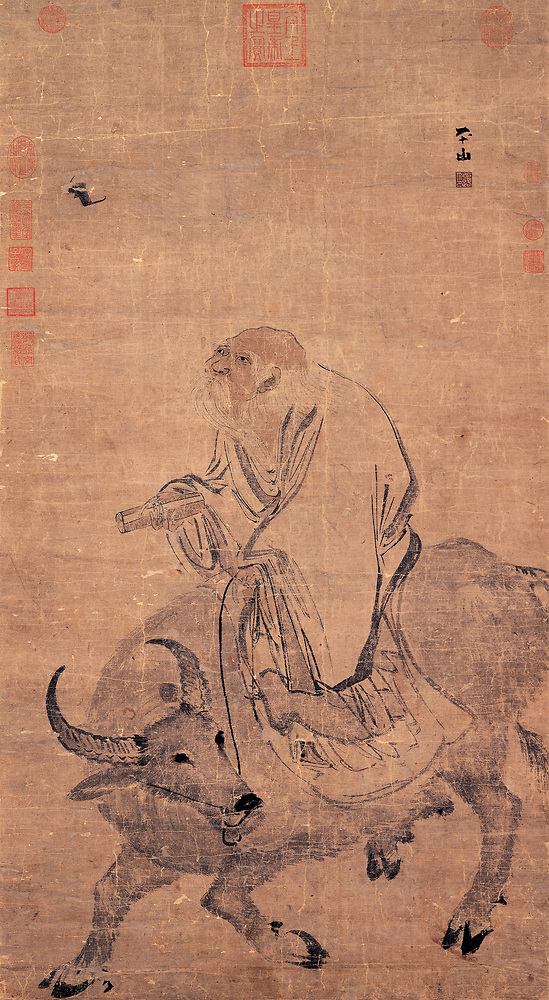A composition exegesis proposal based on Chinese language, allowed by a broadness of interpretation rooted in the simplicity of the notions involved.

Laozi Riding an Ox (畫老子騎牛) by Zhang Lu (1464–1538) 張路 through wikimedia.org – Public domain
For the context, Laozi (6th to 4th BC) is a key figure of Chinese’s Taoism, considered as the author of a central book on the matter, the Tao Te Ching, “道德經”.
As we’ve already shown, 子 is often used as a respectful epithet: Confucius (孔夫子), Laozi (老子), Mencius (孟子), Xunzi (荀子), Jūn zǐ (君子), Tiān zǐ (天子), etc.
That painting depicts Laozi, a prominent figure (老), yet, through his arched back, his mount, and his occupation, humble (small within, 子).
He’s shown looking at a bird (a small thing, 子) in the sky (老: Chinese language’s word for sky, 天, as Western’s languages, embeds the same duality, ordinary sky/Heaven).
Note also that to the ox, of an average weight of nearly ten times that of a human, Laozi is the venerable (老) small thing (子) placed above to be looked at.

Panoramic view from Mount Tianzi Shan, 2012
by
Chensiyuan
Comments
By email, at mathieu.bivert chez: